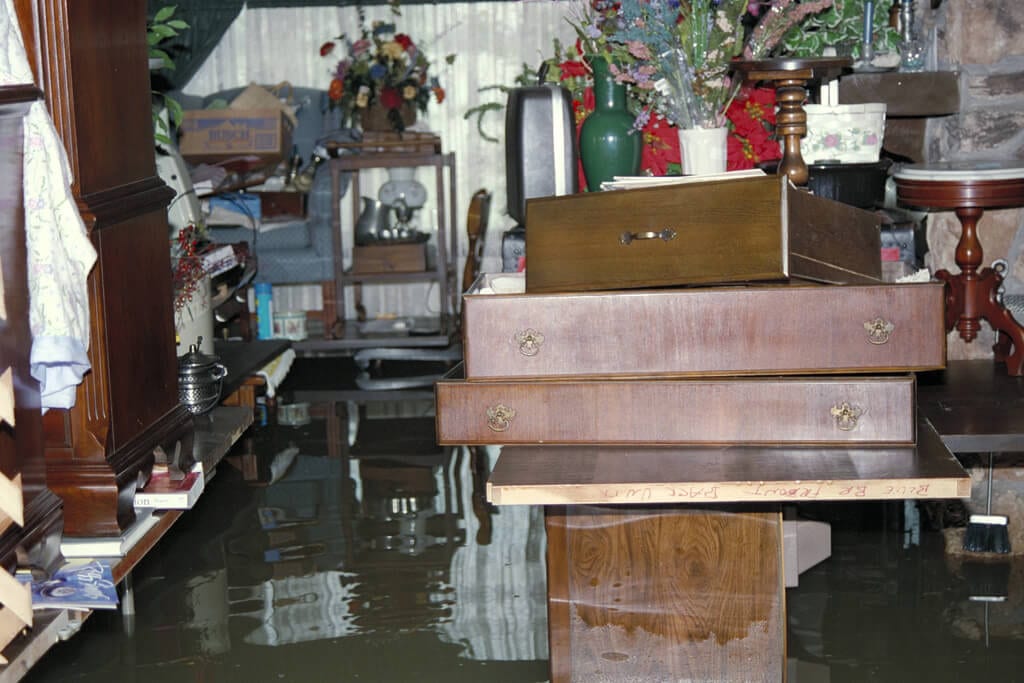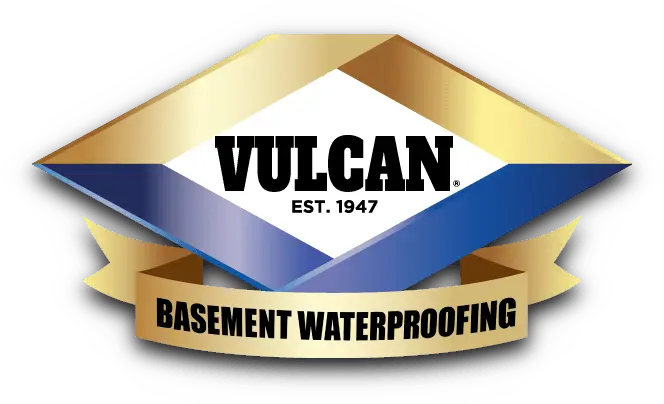Basement flooding can happen any time. Even if your basement remains dry for years, it isn’t a guarantee that it will remain dry for the next two years!

Flooding is the number one natural disaster in America. Bordered by Pacific, Atlantic and Arctic Oceans, the National Flood Insurance Program (NFIP) reveals an average of $3 billion worth of commercial and residential properties are destroyed during the hurricane season, which runs from June 1st until November 30th every year (USAToday, 2014).
These properties include public buildings, farms, resorts, haciendas and all types of basements – crawl spaces, cellars, walk-ups, and look-outs.
A flooded basement is a major stress. Just by the visual of the water in a cluttered area, you feel extremely confused as where and how to start cleaning and drying things. Truth is; you’ll go through the three stages of survival when your basement floods.
Stage 1: Security
It’s okay to feel upset when a basement floods. It’s your natural response. Hurricanes are inevitable and it will never stop until Mother Nature wants to.
This, however, doesn’t mean you can’t do something. While in the middle of a torrential rain, protecting yourself and your family must be your first priority.
Never enter the basement if you see flooding. Instead, do the following:
1. Wait for the water to subside. Better evacuate should the water level keep rising.
2. Switch off the main power. Don’t wait for the local utility to turn off the electricity in your area. Professional Tip: Prepare your flashlight. It’s best if each family member owns one.
3. Whether you decide to evacuate with your family or you volunteer to stay overnight, switch off the gas tank, fuel oil valves and propane valves.
4. Contact your insurance agent to understand the damage extent covered under your policy.
5. Leave the house right away if you smell gas leaks. Stay with your relatives or friends in other cities.
It’s not recommended to go home once a hurricane stops. It’s too risky, especially for your children and pets. To keep everyone safe, only one member should go home and oversee things.
Don’t go inside the basement all by yourself. Either call an emergency basement waterproofer to assist your needs or call a disaster restoration specialist if the water level is high.
The responsibility of a basement waterproofing company is limited to diagnosing and repairing foundation issues after a hurricane.
A restoration specialist, on the other hand, aims to remove the unwanted water, mold and mildew.
Sometimes, a waterproofing company performs what a restoration specialist does.
A team of waterproofers will clean the wet basement before they begin proper restoration. Vulcan Basement Waterproofing is the oldest in the nation.
Stage 2: The Clean-up
Cleaning the basement requires time, effort and teamwork. You can’t do it all by yourself; therefore, it’s best to pay a team of experienced professionals than asking your neighbors for help.
While inside the basement, never eat, drink, smoke or touch anything. Just look into the walls, floors and every corner. You can assist the professionals but make sure you wear thick clothes, rubber boots, gloves, safety glasses and a face mask.
Don’t enter a flooded basement with a shirt, pants and slippers on. Flood water contains bacteria-filled waste materials and you can get sick even by a bit of contact.
Cleaning the basement involves drying the walls and floors, disinfecting the area and letting go of the damaged items.
These activities are stressful; therefore, it helps not to lose your patience. Stop complaining and start helping.
1. It’s expected for the professionals to use a wet vac to suck the water up and dispose.
2. Identify the important belongings from the unnecessary. Separate them quickly and let it dry.
3. Electronic items such as TV, computers, stereo and washing machine that didn’t come into contact with the flood can be saved. Take them outside immediately.
4. Never touch any electronics, electrical fixtures and telephones while under water. Let the professionals handle the situation.
5. Any type of flooring such as wood flooring and carpeting would absorb fluids and should be removed immediately.
6. Get rid of excess water using old rags and towels.
7. Some furniture might be saved but it needs professional cleaning and drying.
8. Those minor items should be placed in regular garbage pickup.
9. Disinfecting the area begins by scrubbing the concrete surface with clean water then with a cup of chlorine bleach diluted in water gallon.
10. All washable fabric items must be washed with warm water with bleach. Professional Warning: Never mix bleach with any product that contains ammonia. The resulting fumes are toxic and are harmful to your health.
11. The sump pump drains must be disinfected by using undiluted chlorine bleach.
12. Replace the portion of drywall that came into contact with flood water. This prevents mold and mildew growth.
13. Some wood paneling may be reused if cleaned and dried properly.
14. Discard the following items: Food, medicines, carpeting, mattresses, pillows, upholstered couches, pressboard furnishings, paper bags, cardboard boxes, magazines, letters, books, photographs, toys, playpen, baby bottles and blankets.
Stage 3: Renovation
It’s time for renovation after two to three days of clean-up. Planning for renovation is the best possible time to sort out existing problems and decide how to fix it (Utilities Kingston, 2014).
A team of waterproofing professionals will submit a proposal. Vulcan Basement Waterproofing is the oldest in the nation.
Rebuilding your basement begins with resolving the exact source of the flooding then ensuring it becomes dry for the next years to come (NationalPost, 2013).
Thorough renovation and basement waterproofing involve the following:
1. A licensed electrical contractor must check your home’s electrical system before switching it on.
2. Storing items in watertight containers.
3. Keep electronic things off the floor.
4. Upgrade the foundation drainage system.
5. Install quality sump pumps in recommended areas.
6. Ask your contractors if it’s necessary to remove one foot of drywall above the flood line. This is the vulnerable part of a drywall and moisture begins to creep in behind the surface.
7. Install a ventilation system to remove stale, damp, contaminated air.
8. Improve the exterior and interior French drains to assure a dry basement in the following years.
Also, there are simple but long-term maintenance tips you should follow after renovation. These include removal of waste, leaves, garbage, ice and snow inside the sewer grates and downspouts, no pouring of fats, oils and grease down the drains and reduction of home water use especially during heavy rains.
Vulcan Waterproofing can help you with all of your needs, in both a true emergency or just when a trickle of water enters after a storm.
Keep in mind this is a sign of possible hidden damage that can become much worse if it’s not handled.
Water problems don’t go away, they can only get worse, remember the Grand Canyon started with a stream!
